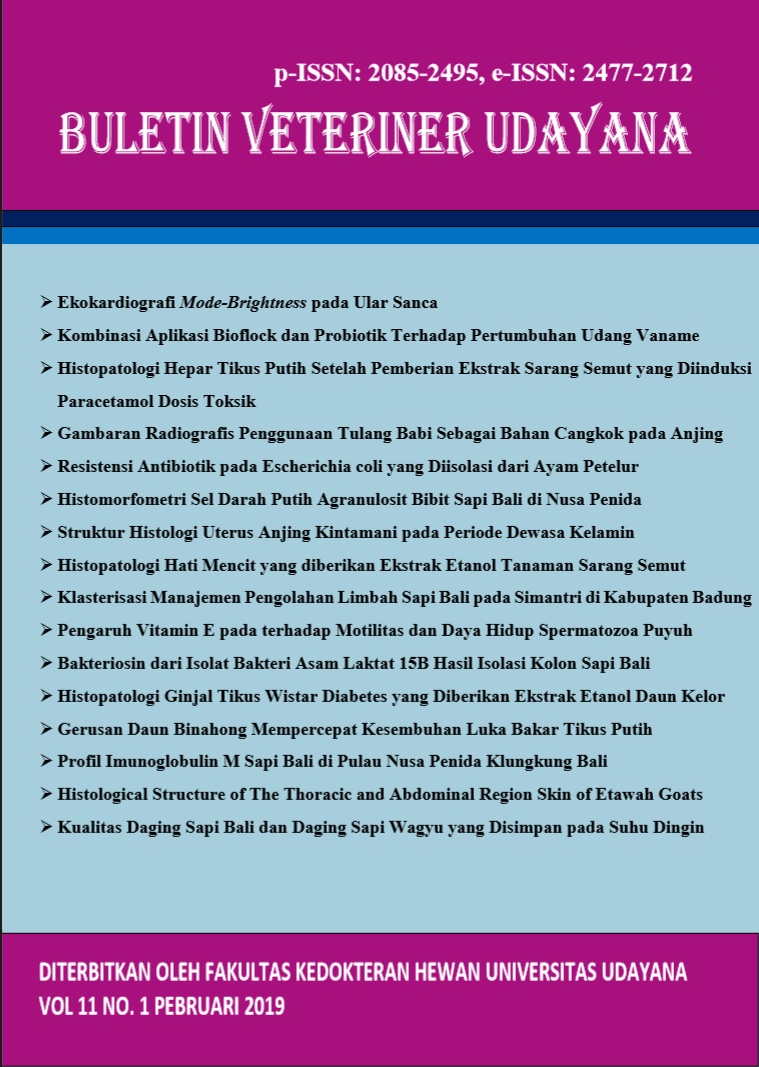THE SCOURING OF BINAHONG LEAVES ACCELERATES THE HEALING OF BURNS ON WHITE RATS
Abstract
Burns wound is a condition where the skin tissue damage due to skin contact by the heat source such as electricity shock, chemicals irritation, fire and radiation. Research on Binahong (Anredera Cordifolia (Tenore) Steenis) has been conducted by applying leaf crush Binahong plant on the rat skin surface (Rattus norvegicus). The result is that Binahong plany can heal burns. It proven that on the examination of macroscopic microscopic of the white rats skin can shorter duration of inflammation by fasten collagen density epithelialization.[11: Research results were statistically analyzed with the help of tools SPSS for windows 17 conducted using The Randomize Posttest Only Control Group Design. Thirty-two (32) female white rats weight 150-200 gram were divided into two treatments in which each treatment consisted of 16 rats. results were statistically analyzed with the help of tools SPSS for windows 17. Results of the study are: 1. Binahong leaves binahong affecting the healing of burns on rats by accelerating the speed of skin epithelialization process. 2. The research result can be used for treatment of skin burn. And suggesting that Binahong can be used particularly in remote area where lack of medicine access.
Downloads
References
Christianson DW. 2006. Structural biology and chemistry of the terpenoid cyclases. Chem. Rev. 106: 3412-3442.
Dealey C. 2012. The Care of Wound : A Guide for Nurses, 4th Edition. Willey-Blackwell.
David SP. 2007. Anatomi Fisiologi Kulit dan Penyembuhan Luka. Plastic Surgery Departement, Airlangga University School of Medicine. Surabaya
Harvey C. 2005. Wound Healing. Orthoped. Nurs., 24(2) : 143-149.
Jeon H, Kim H, Choi D, Kim D, Park SY, Kim YM, Jung Y. 2007. Quercetin activates an angiogenic pathway, hypoxia inducible factor (HIF) –1 vascular endothelial growth factor, by inhibiting HIF-Prolylhydroxylase: a structural analysis of quercetin for inhibiting HIF-Prolyl hydroxylase. Mol. Pharmacol., 71(6): 1676-1684.
Kalangi SJR. 2004. Peran Kolagen Pada Penyembuhan Luka. Dexa Media.
Kim Y, Wampler DJ. 2009. Determination of Saponin and Various Chemical Compounds in Camellia Sinensis and Genus Ilex. Sensus Technical .Note: Hamilton Pp: 1-5.
Kottaimuthu R, Malaisamy M, Ramasubbu R. 2012. A new distribution record of Anredera cordifolia (Ten.) Steenis (Basellaceae) from High Wavy Mountains, Western Ghats. J. Biosci. Res., 3(3): 142-144.
Rachmawati S. 2008. Studi makroskopik dan skrining fitokimia daun Anredera cordifolia (Ten) Steenis. Thesis. Universitas Airlangga.
Sabir A. 2005. In vitro antibacterial activity of flavonoids Trigona Sp propolis against Streptococcus mutans. Dental J., 38(3): 135-141.
Sumartiningsih S. 2009. Pengaruh pemberian binahong (Anredera cordifolia) terhadap sel radang dan sel fibroblast pada hematoma regio femoris ventralis rattus norvegicus strain wistar jantan. Program Pasca Sarjana Universitas Airlangga.
Mitchell RN, Cotran RS. 2003. Acute and chronic inflamation. Dalam Robbins SL, Kumar V. Robbins Basic Pathology. 7th Ed. Elsevier Saunders. Pp: 33-59.
Eming SA, Krieg T, Davidson JM. 2007. Inflammation in wound repair: molecular and cellular mechanisms. J. Invest. Dermatol., 127(3): 514-525.





